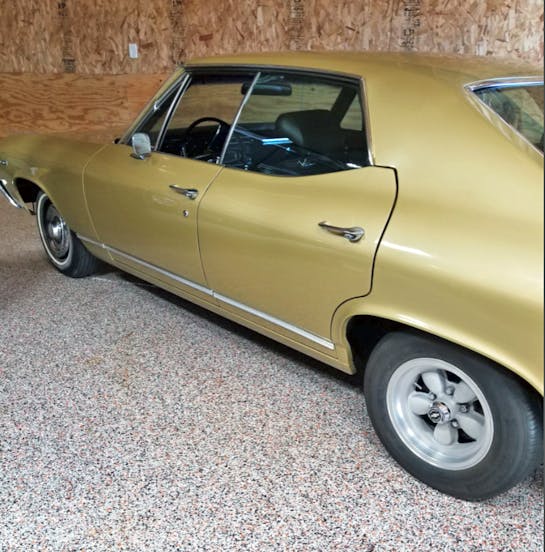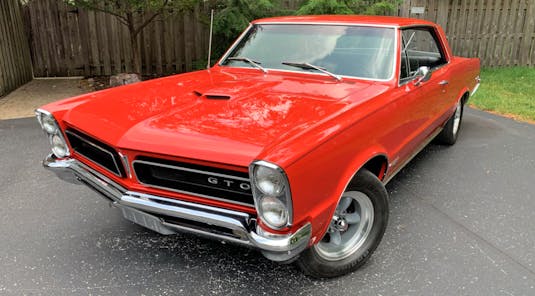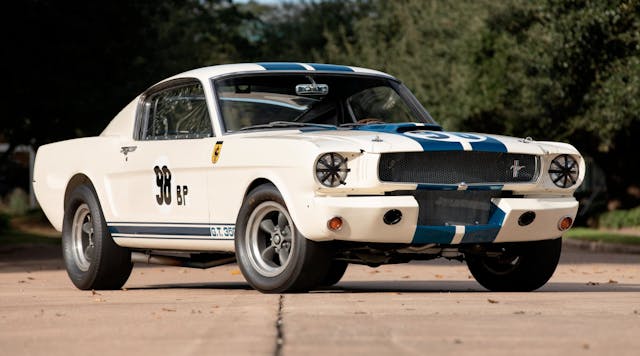Media | Articles
According to you: Which vehicle wore Torq Thrust wheels best?
It all started in the early 1960s on America’s race tracks and drag strips. In these venues, the uniquely tapered spokes of American Racing’s Torq Thrust wheel earn their reputation via lightweight magnesium and stiff one-piece construction. The street-going version featured a more durable material choice (aluminum), and future designs could clear disc brake calipers and were offered in larger diameters to increase their appeal. But, much to American Racing’s dismay, this popularity ushered in countless copycat designs from other manufacturers.
We aren’t going to dig any further in to the Torq Thrust’s history (that is available here), because our original mission was to ask you a simple question: What vehicle looked best wearing these rims? This question was posed to readers of the Hagerty Community, and the responses were just as diverse as the number of copycats that came from the original Torq Thrust design. The responses might be obvious to some, but we had a few curveballs thrown into the mix.
So let’s not waste any more time—let’s get into the best vehicles to ever wear Torq Thrust wheels.
Where you’d expect: Corvettes

Much like the Corvette, American Racing’s masterpiece was perfectly suited to both road and track. While (turbine) aluminum wheels became commonplace on the mid-year (C2) Corvette, sometimes there’s no substitute for Torq Thrusts on America’s sports car. Hagerty Community member zr1bill probably said it best when he voted for “the mid-year Corvette, 1963–1967. Torq Thrust wheels were the first thing you purchased for your Vette. I heard that the Torq Thrust D was created to clear the disc brakes on the ‘65 Corvettes.”
Where you wouldn’t expect: Sedans

Sedans and coupes generally share a lot of componentry, so why not add Torq Thrusts to a sedan as you would its more conventional, two-door relative? Community member Bobskull showed us his 1969 Chevelle hardtop sedan sitting on American Racing’s finest. Except these are probably the daisy mag wheels … but just compare the look at the rear axle relative to the front. Sedans can be muscle cars too, right?
Marketplace
Buy and sell classics with confidence
Where you’d expect: Pony cars

As long as Mustangs and Camaros have done battle on street, strip, and road course, they’ve done so with Torq Thrusts making the battle just a bit more fierce. American Racing proved the concept in motorsport before the phrase “pony car” became a thing, but the likes of Shelby Mustangs and SCCA-approved Z/28 Camaros made the wheels even more appealing. Hagerty Community member OldRacer79 sums up my thoughts best when he suggests that Torq Thrusts go on “any early (’66–68) Trans-Am race car. I’m partial to the Cougars and Mustangs, but any are good.”
Where you wouldn’t expect: Malaise Era metal
Please believe that I wanted to avoid discussing my personal experiences with Torq Thrust wheels (albeit fake ones from American Eagle) because I normally feel that discretion is the better part of valor. (My 1978 Continental Mark V looked pretty great with a slick-top conversion and no bodyside moldings, but the wheels gave it the curb appeal.)
My plan went down the drain when Hagerty Community member jxhammann let my freak flag fly with his comment to endorse the 1978 Dodge Charger, admitting that “of course the ’78 Charger looks better no matter what it’s wearing.” Malaise Era cars are underrated, but far less so when sitting on Torq Thrusts.
Where you’d expect: Muscle cars

How much digital ink must be spilled to prove to you that muscle cars and Torq Thrusts go together like peanut butter and jelly? The sheer volume of perfection present with these wheels and any muscle car from GM, Ford, and Chrysler is difficult to quantify. Or perhaps I just did … but no matter, Hagerty Community member PurelyPMD puts the point into context by suggesting “I have a vintage original set on my ’69 T/A. Purists will balk, but I like them.”
Where you’d expect: Hot rods

Decades separate the time between the hot-rod body style and the initial run of American Racing’s Torq Thrusts, but that doesn’t stop owners from adding a slightly modern twist to an older vehicle. Hagerty Community user lowlid posted one such hot rod and suggested that anything looks better with these wheels!
Wait … do I see a trend emerging?
Where you wouldn’t expect: Anything
Through the magic of Google, I found two interesting nuggets of wisdom: Mooneyes has a presence in Japan, and it sells Torq Thrusts made for many vehicles commonly seen on Japanese streets. Here are some of the comments from users of the Hagerty Community that further prove the point:
Huntz-Hall: You can put these classic wheels on any car & they would look prefect!!!
FFlip: They are just a good looking wheel. They go good on anything really.
YnotS2K: How about ANY car?
It’s a shame I didn’t find this photo of the Prius for the initial query I posted to the Hagerty Community, as I am sure it would have blown some minds. And to be fair, Torq Thrusts make the famous (infamous?) Toyota hybrid look far cooler than anyone could have anticipated. Which begs the question: Is there any car that would not look better with American Racing’s Torq Thrust wheels attached to its chassis?










